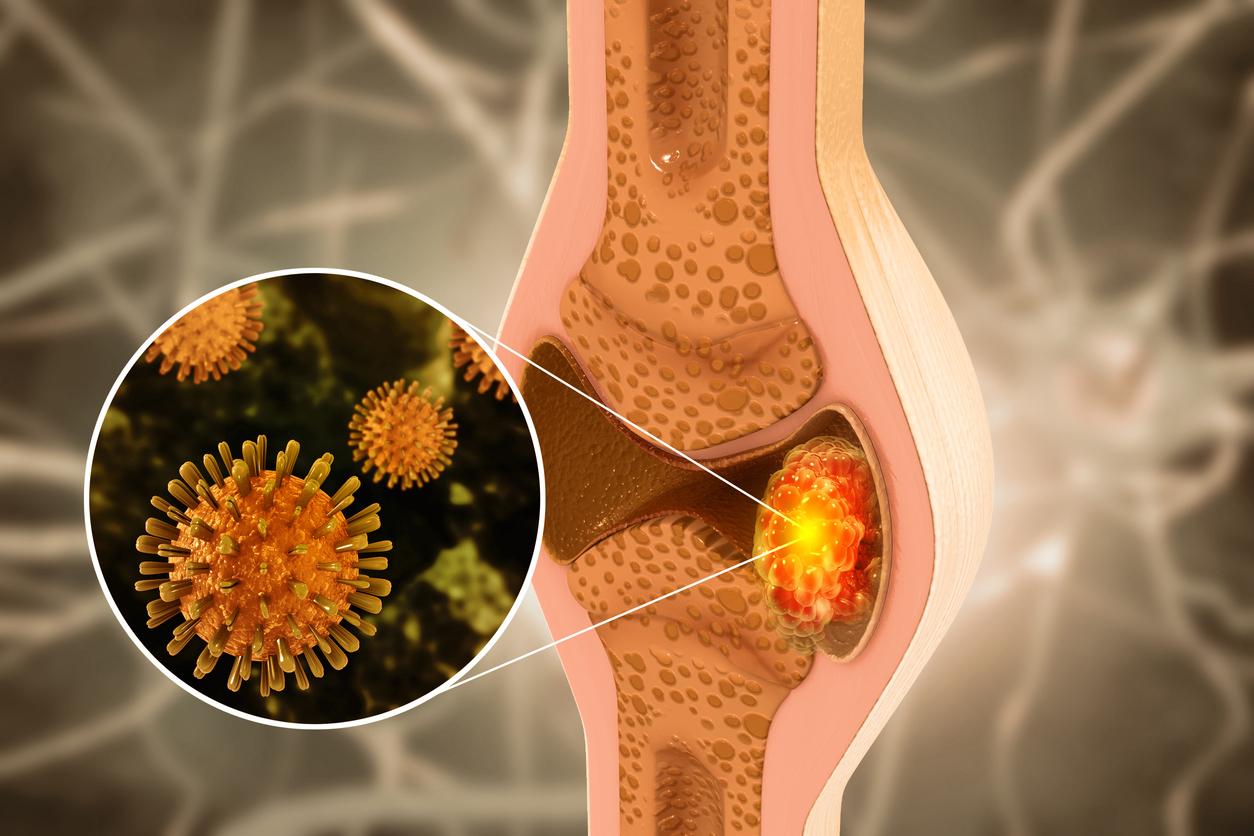SUMMARY :
- Ingrown nail: what is it?
- What are the causes of ingrown toenails?
- Ingrown Toenail Symptoms
- Ingrown nail: when to consult?
- How to treat ingrown toenail?
Ingrown nail: what is it?
An ingrown toenail occurs when a toenail becomes encrusted, then incarnates in the flesh. “It often manifests itself because of a bad nail cut that is too short or sometimes because of the morphology of the nail”says Sylvie Servat, podiatrist in Paris.
“When the nail becomes embedded, it begins to enter the flesh but is not planted. If left lying around, it can become infected and then become very painful.”she continues.
What are the causes of ingrown toenails?
There are several causes for the appearance of an ingrown toenail:
- A “repeated trauma in shoes”especially if they are too small or too tight at the end. “Microtrauma will cause thickening of the nail“, continues the podiatrist;
- A bad cut of the nail, either if they are cut too short or if the corners are cut in roundness;
- Malformations or different morphologies: Provencal tiles (rounded) or fan-shaped (nail that flares out). “We also speak of a volute shape or a kinked nail, when the nails are planted at a right angle in the skin”explains Sylvie Servat;
- Diseases like diabetes.
“People who sweat a lot on their feet will also be prone to ingrown toenails, especially because it will soften the tissues and make the nails more brittle.“, indicates the podiatrist. They will therefore incarnate more quickly.
Ingrown Toenail Symptoms
The ingrown toenail can affect any toe, but in 90% of cases, the big toe is affected. “In order, it will manifest itself by pain around the nail, heat, redness then swelling and finally a bulge, called botryomycoma at the level of the toe “lists Sylvie Servat.
The ingrown nail develops in three phases: the initial stage, the infection, then when it worsens the fleshy budding with the botryomycoma, a benign tumor. It is very vascularized: it will generally be painful and bleed at the slightest touch.
In case of infection, the pain may be more intense due to the possible presence of pus.
Ingrown nail: when to consult?
“As soon as you feel pain, you must immediately consult because the inflammation is very fast”says Sylvie Servat.
How to treat ingrown toenail?
To cut the ingrown toenail, specialized pliers exist. Podiatrists can use cutting gouges to cut the edge of the nail. Botryomycoma can be cured with silver nitrate or topical antibiotic.
“In order to prevent the ingrown toenail from getting worse, it is possible to perform Dakin Cooper baths (an antiseptic product) for 3 days, one capful in a liter of water, twice a day for 15 minutesexplains Sylvie Servat. This will allow the wound to drain and stop the infection..”
If the infection is too severe, a operation is necessary. It removes the edge of the nail that has inserted into the skin. The nail is previously desensitized by anesthesia.
Our speaker: Sylvie Servat, podiatrist pedicure in the 16th arrondissement of Paris
Read also:
- White spots, streaks: 6 things to know about your nails
- These 5 gestures that damage your nails
- Nail abnormalities: which diagnoses?


















